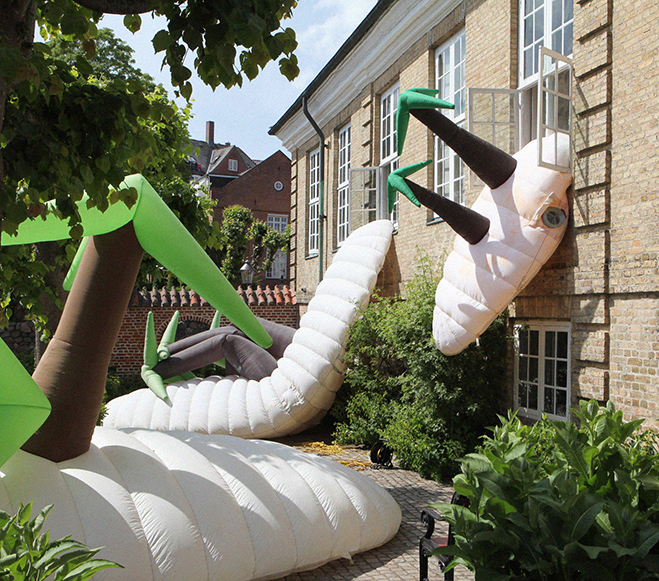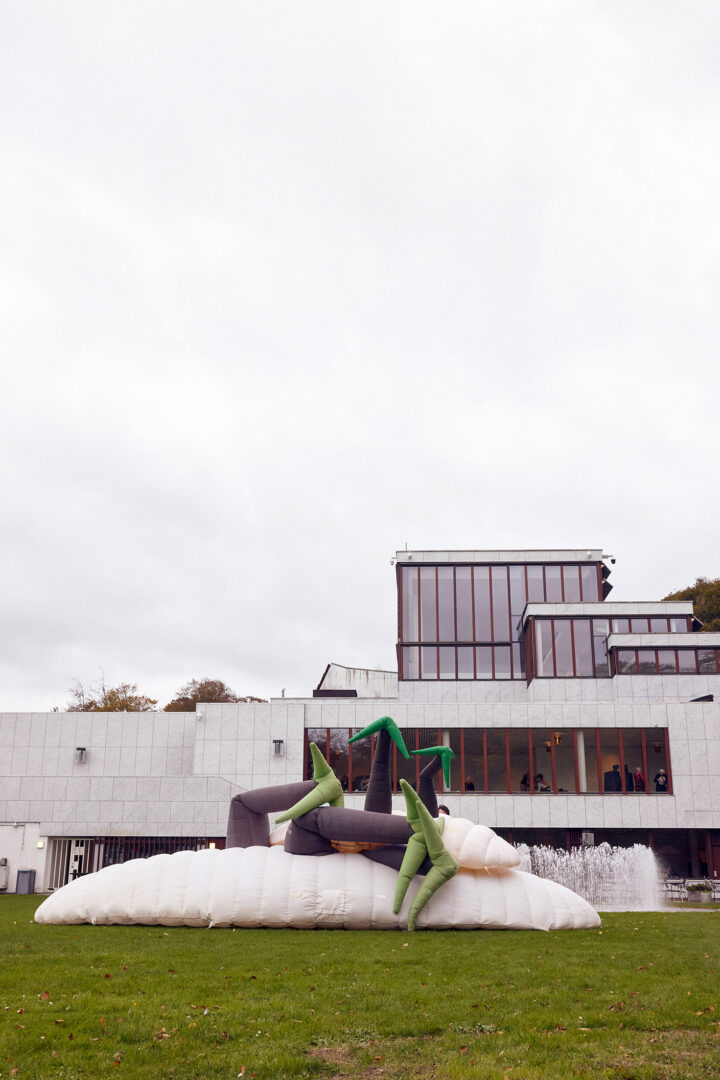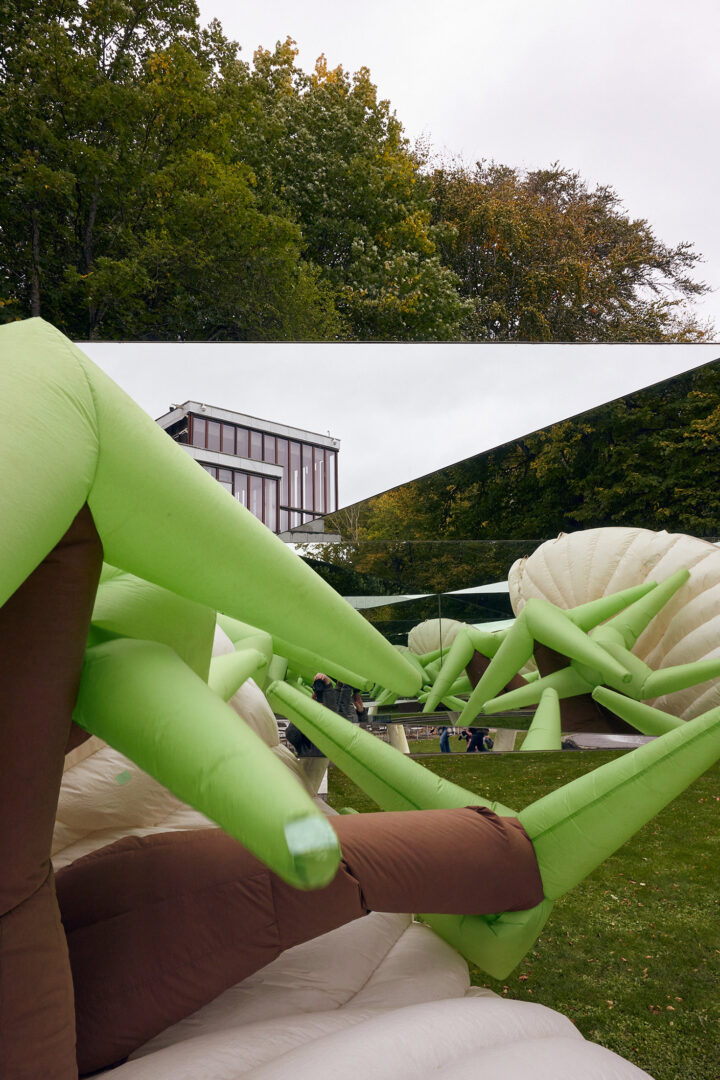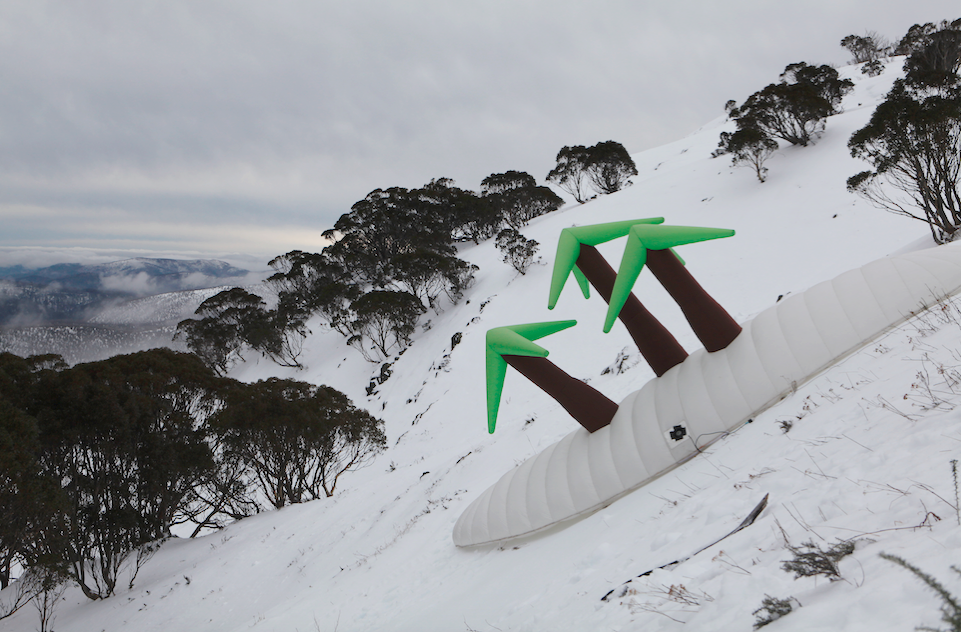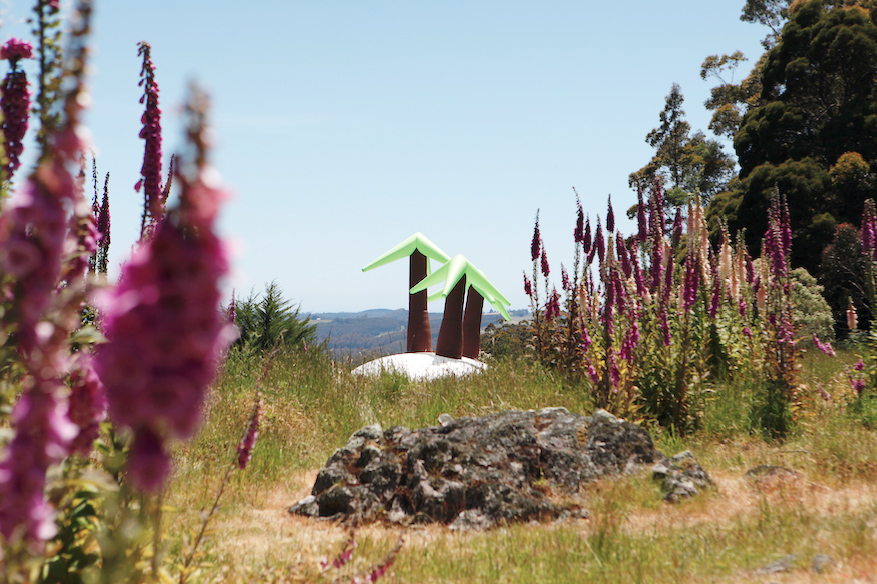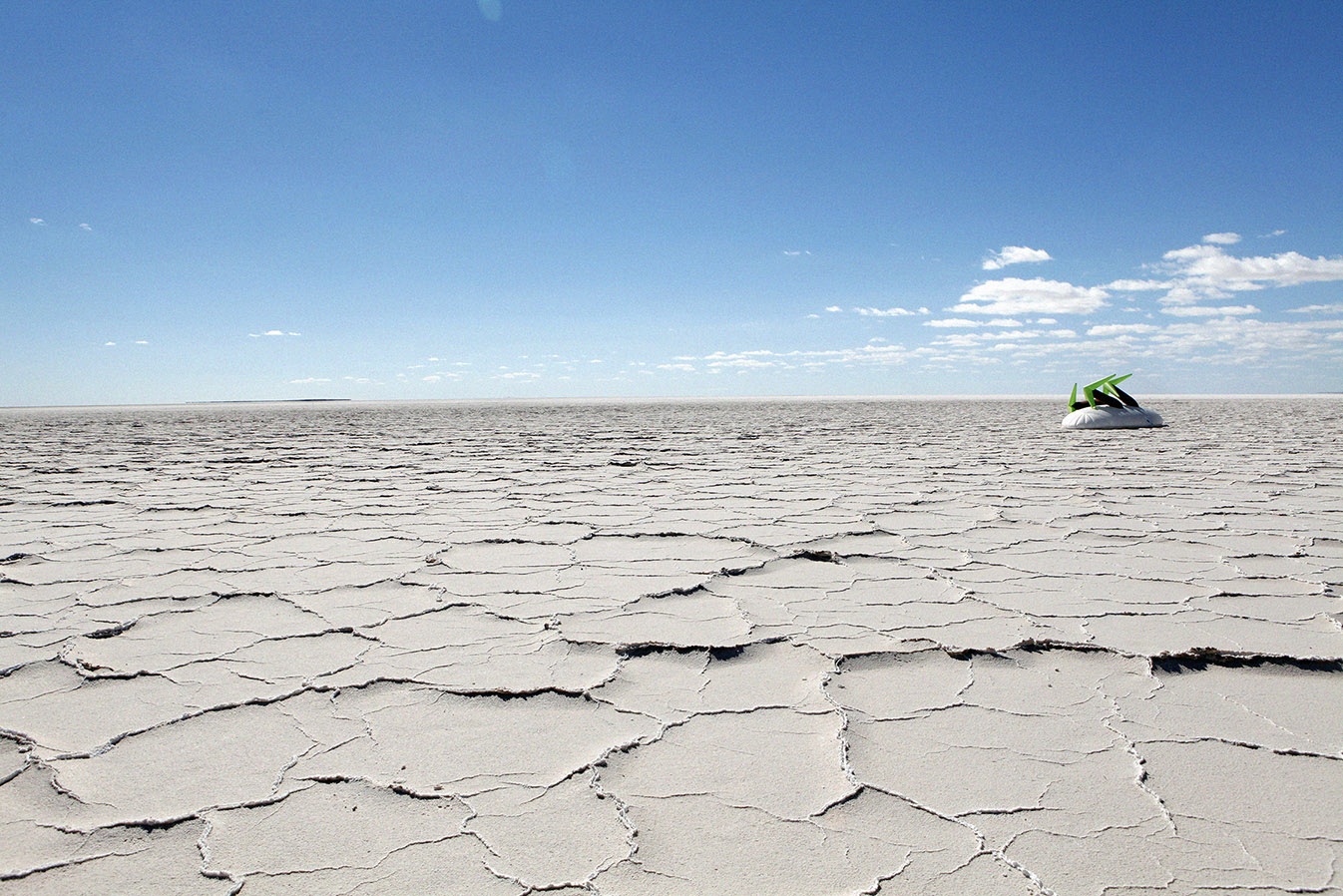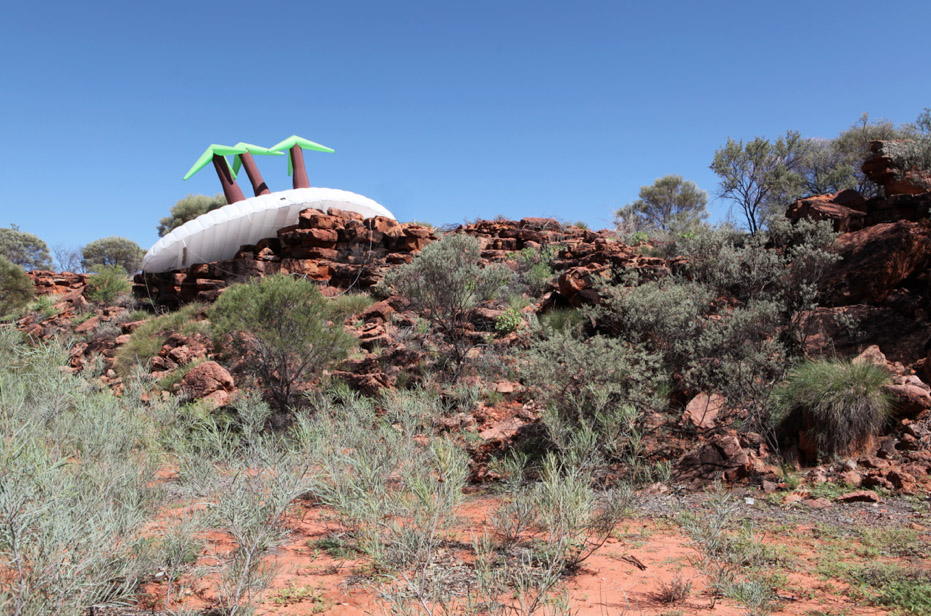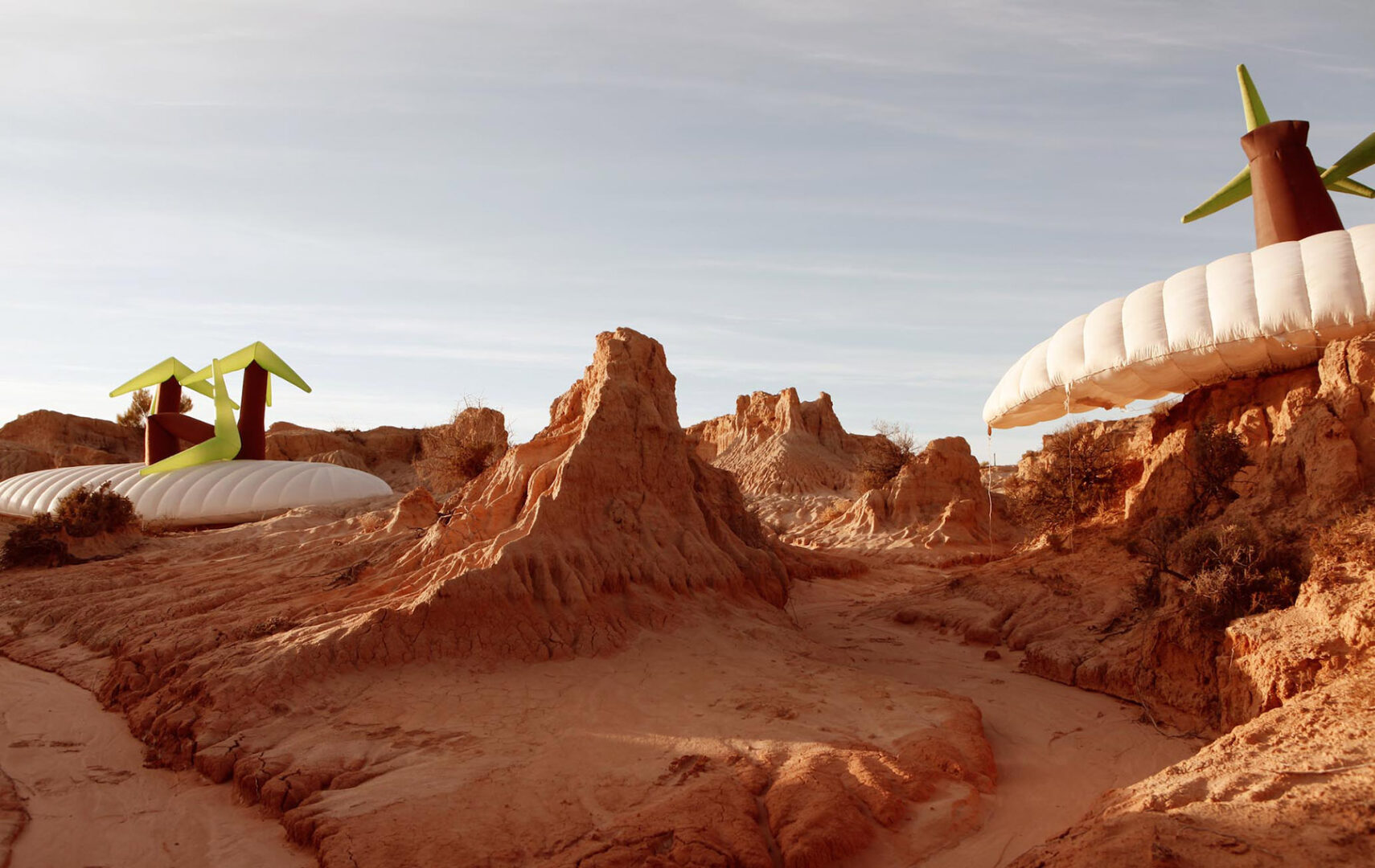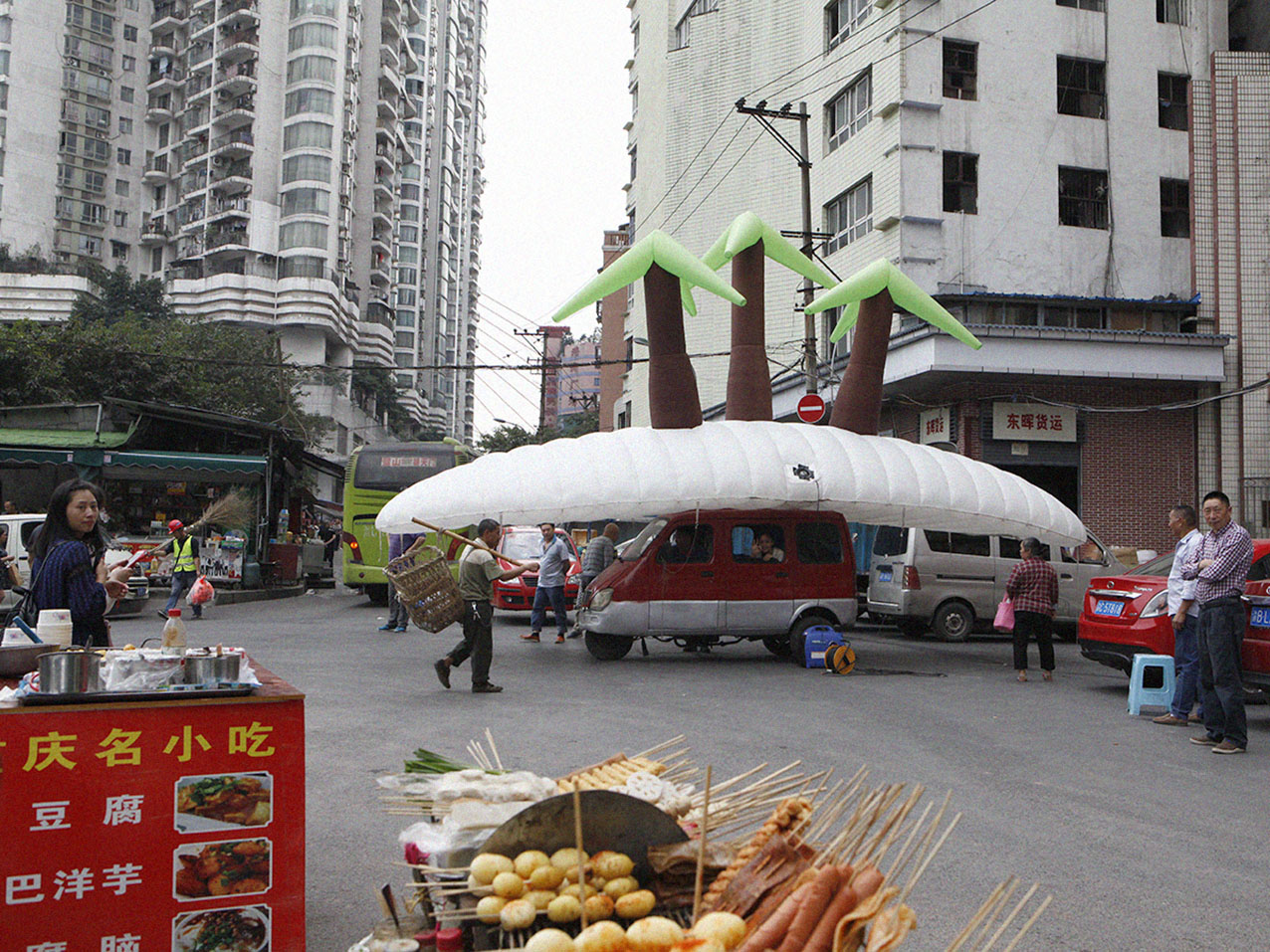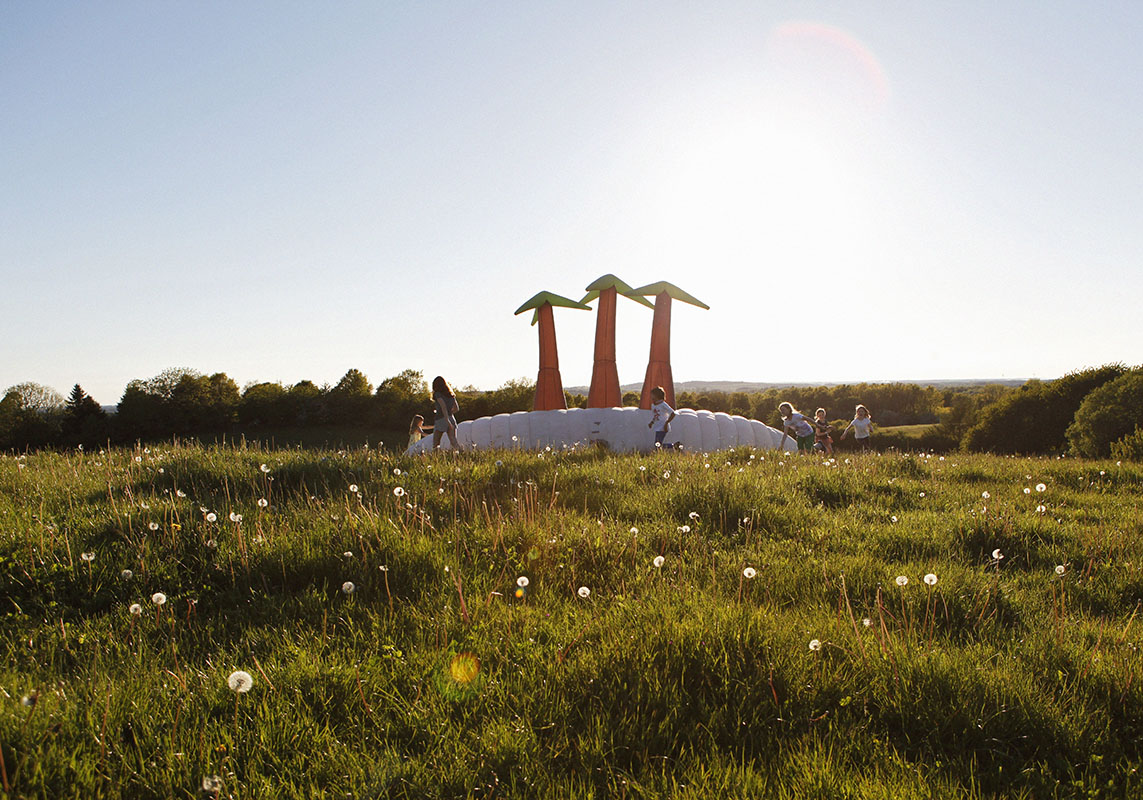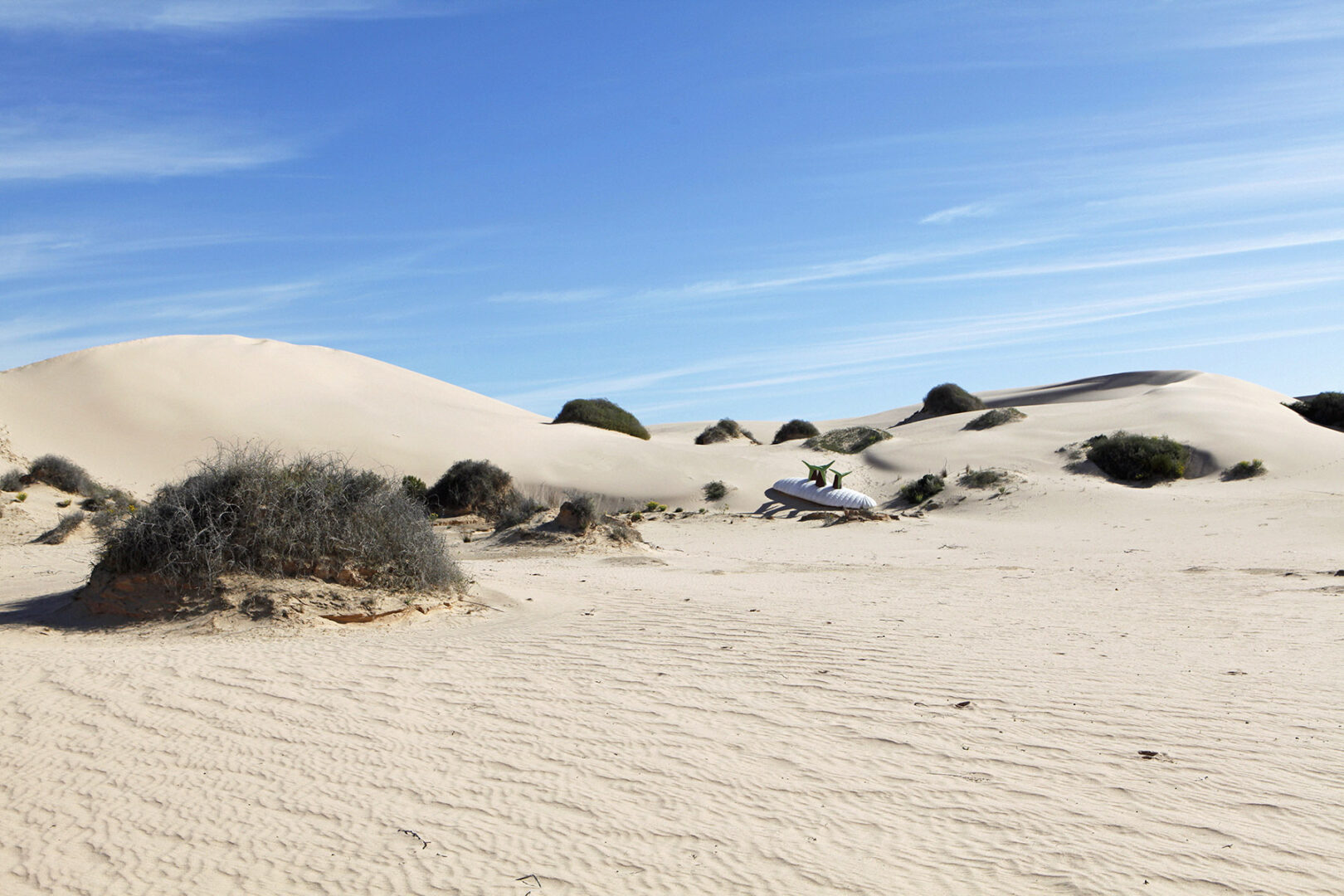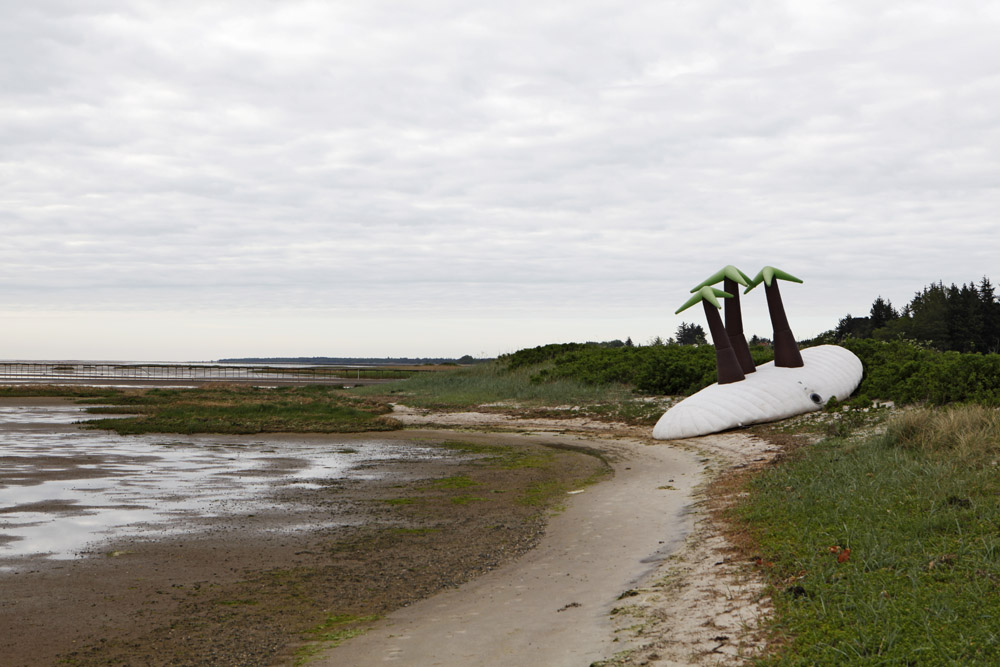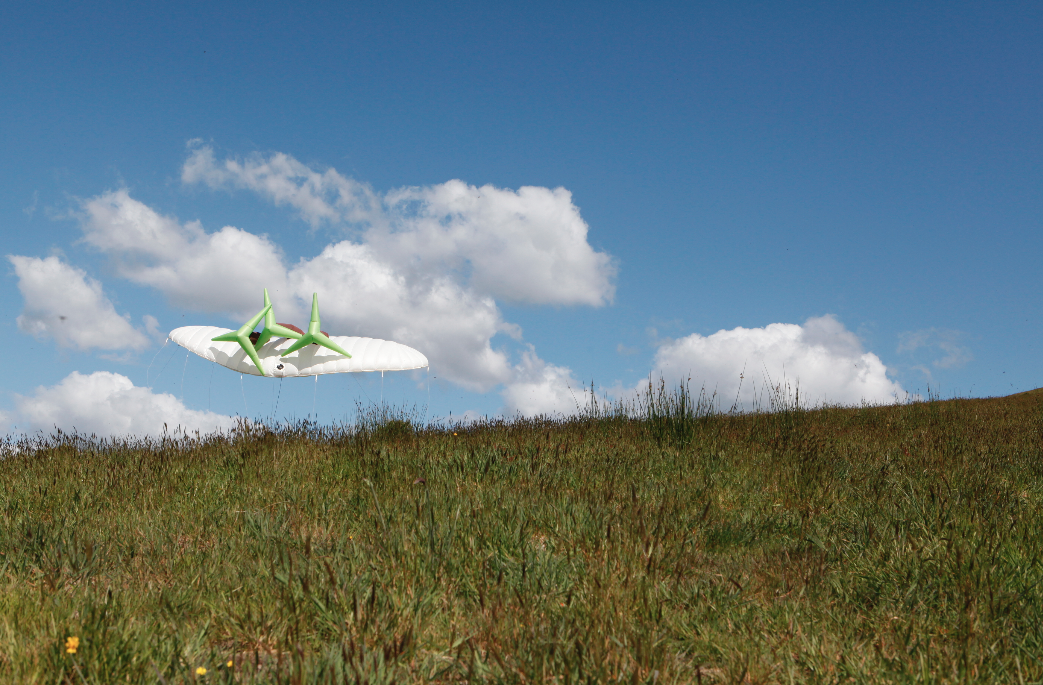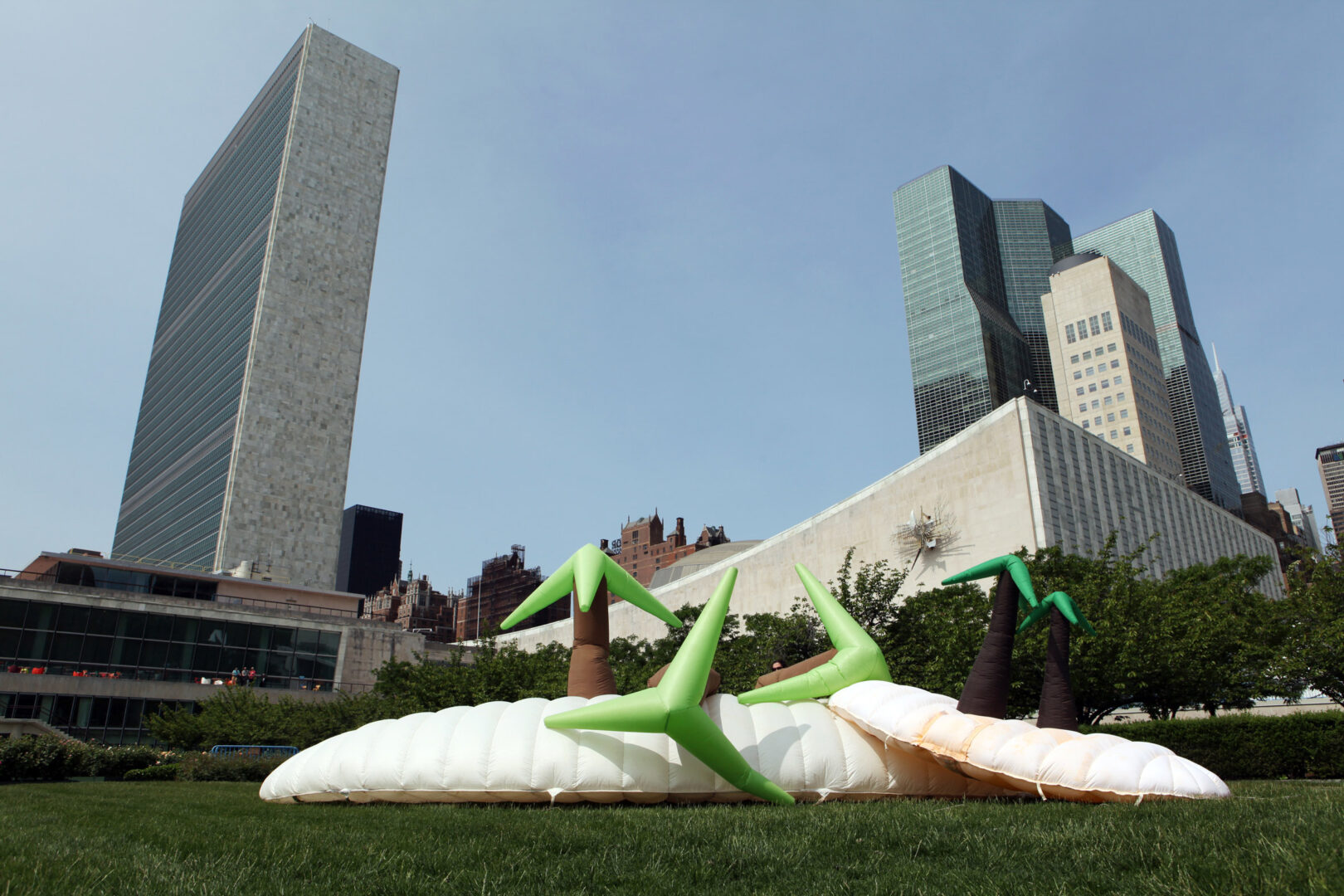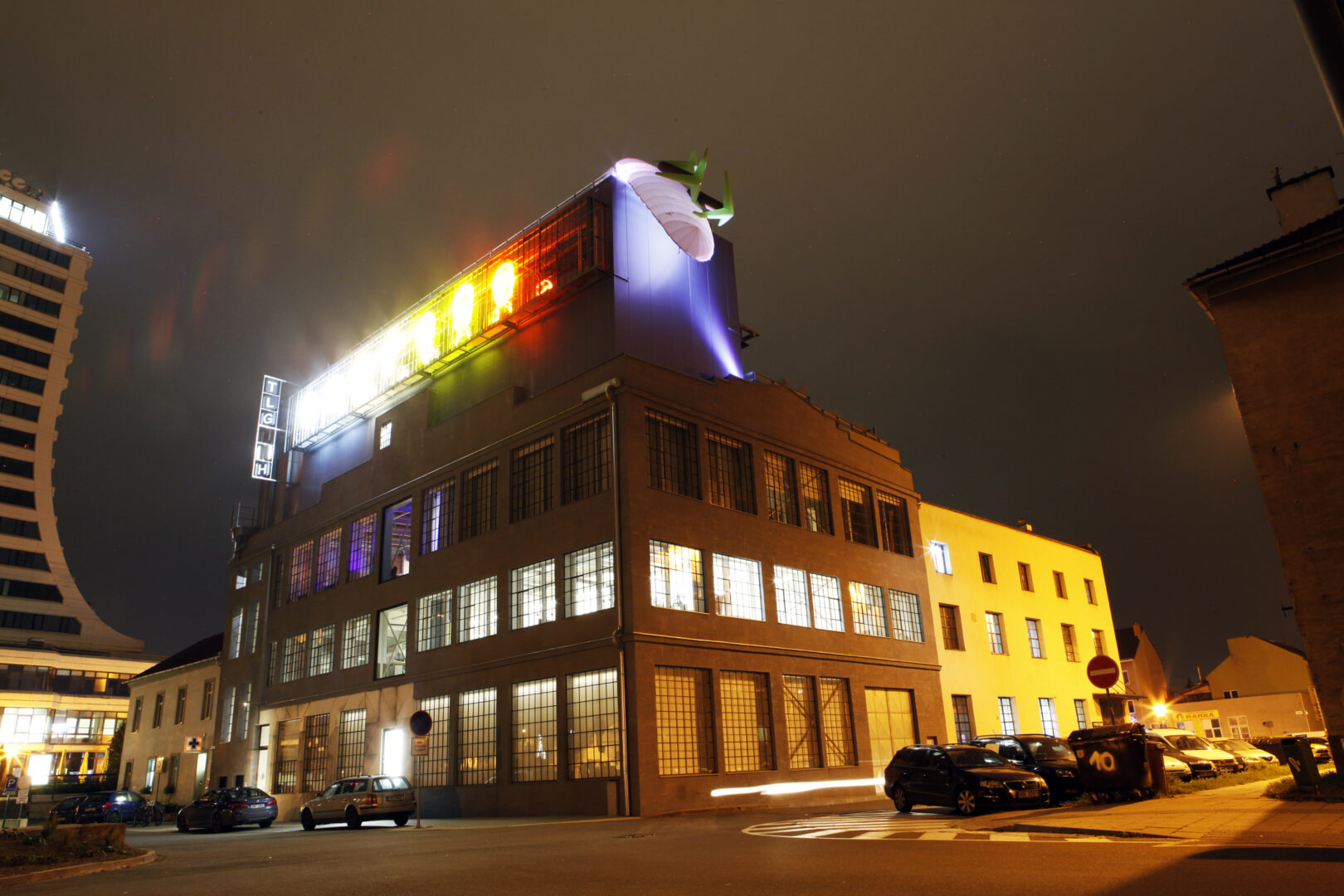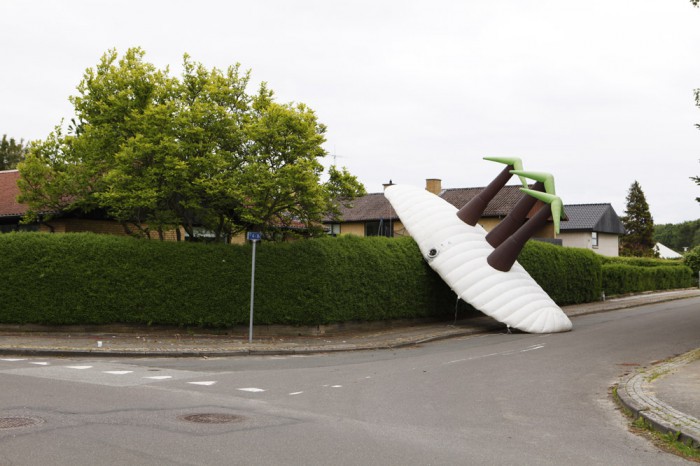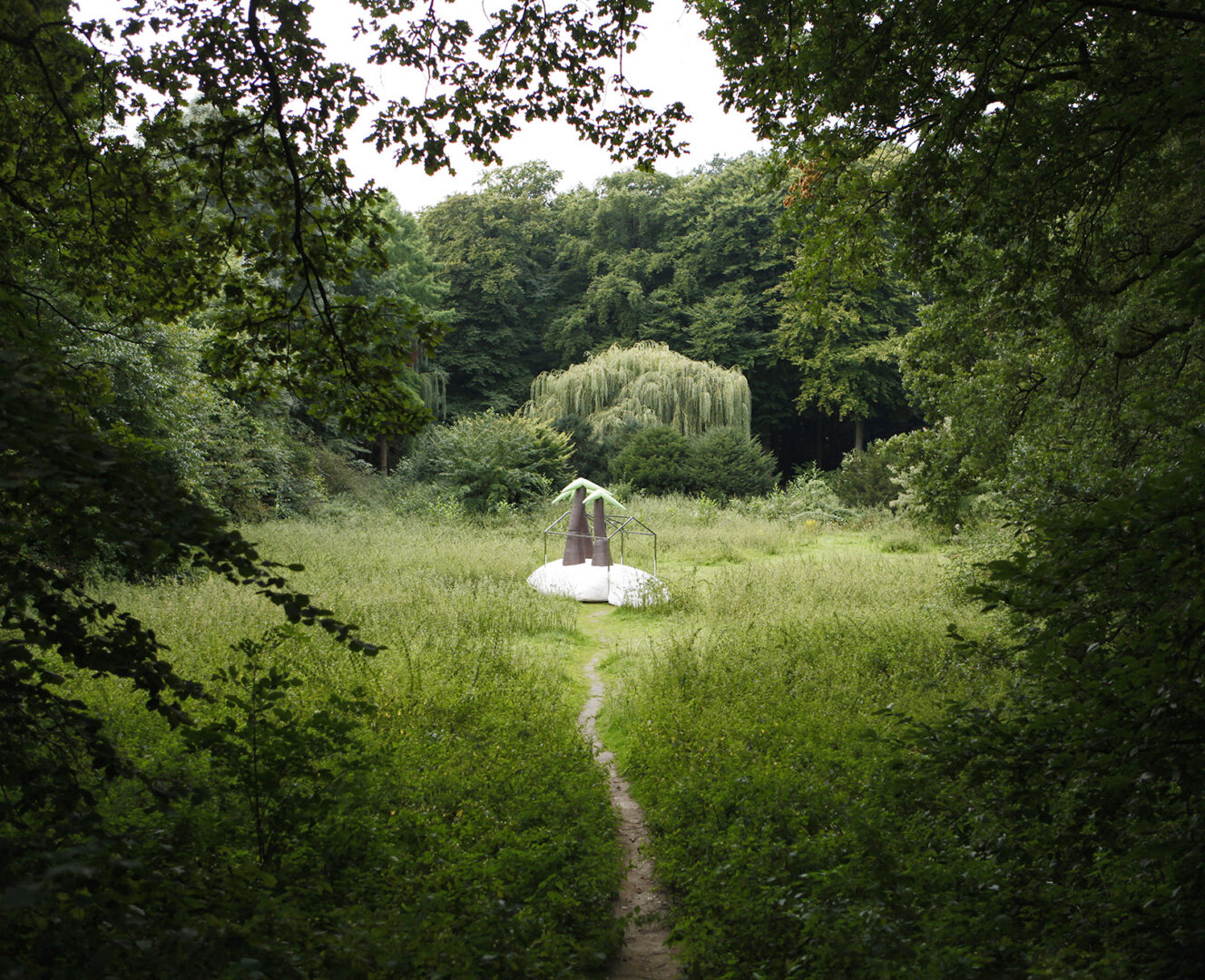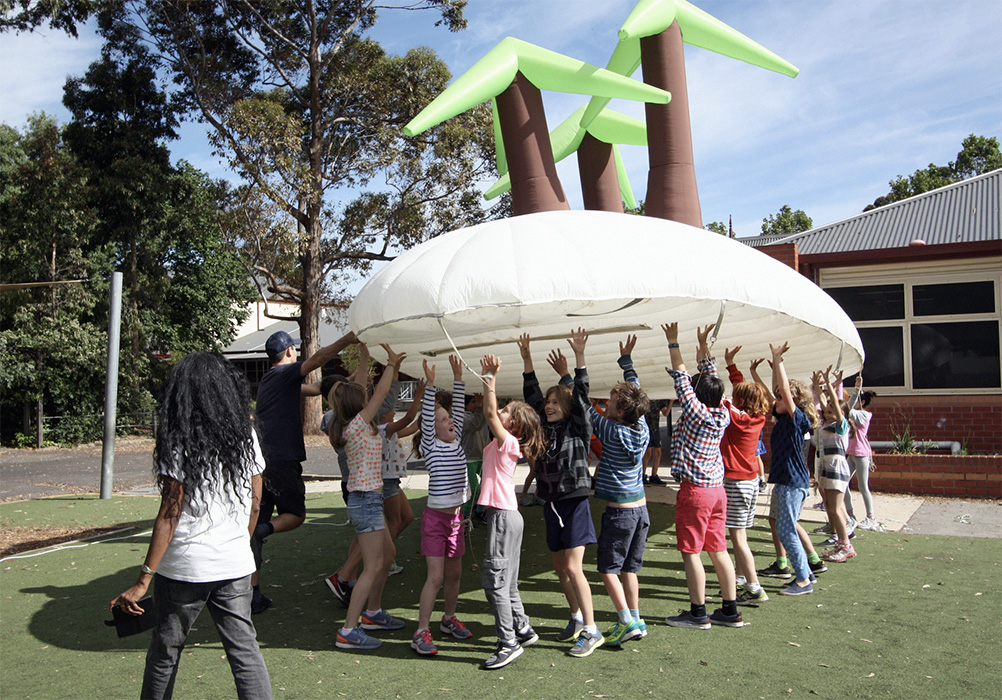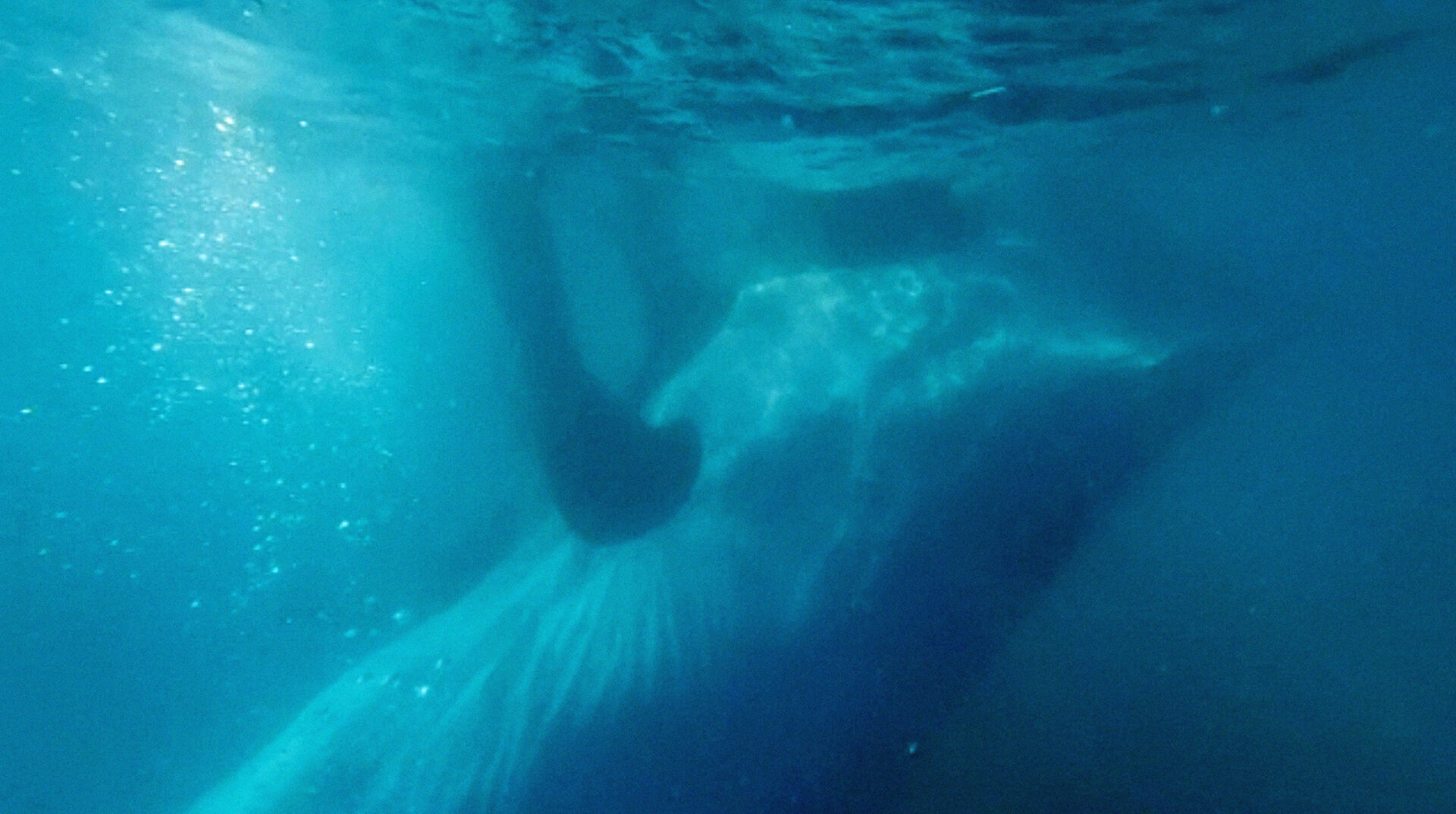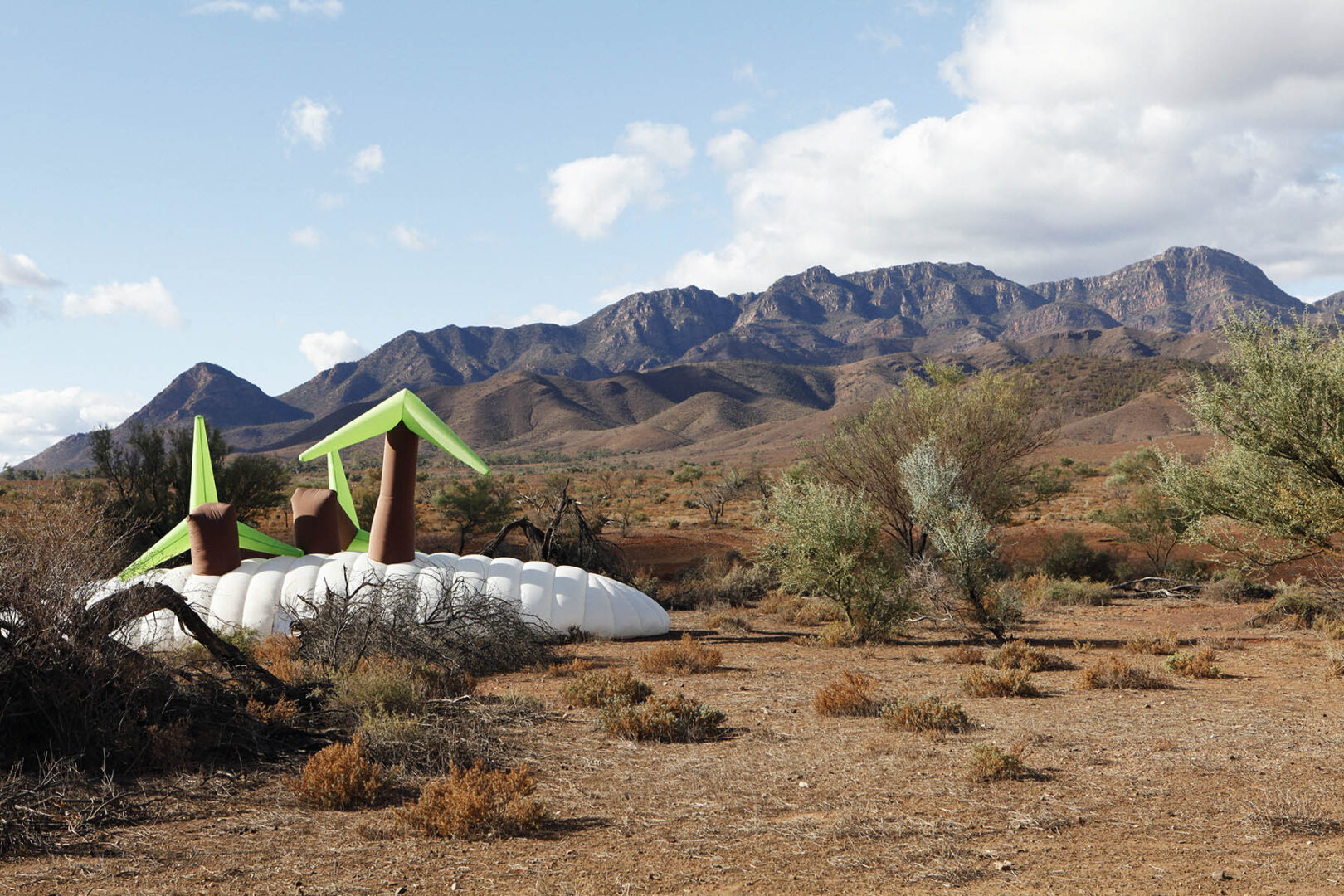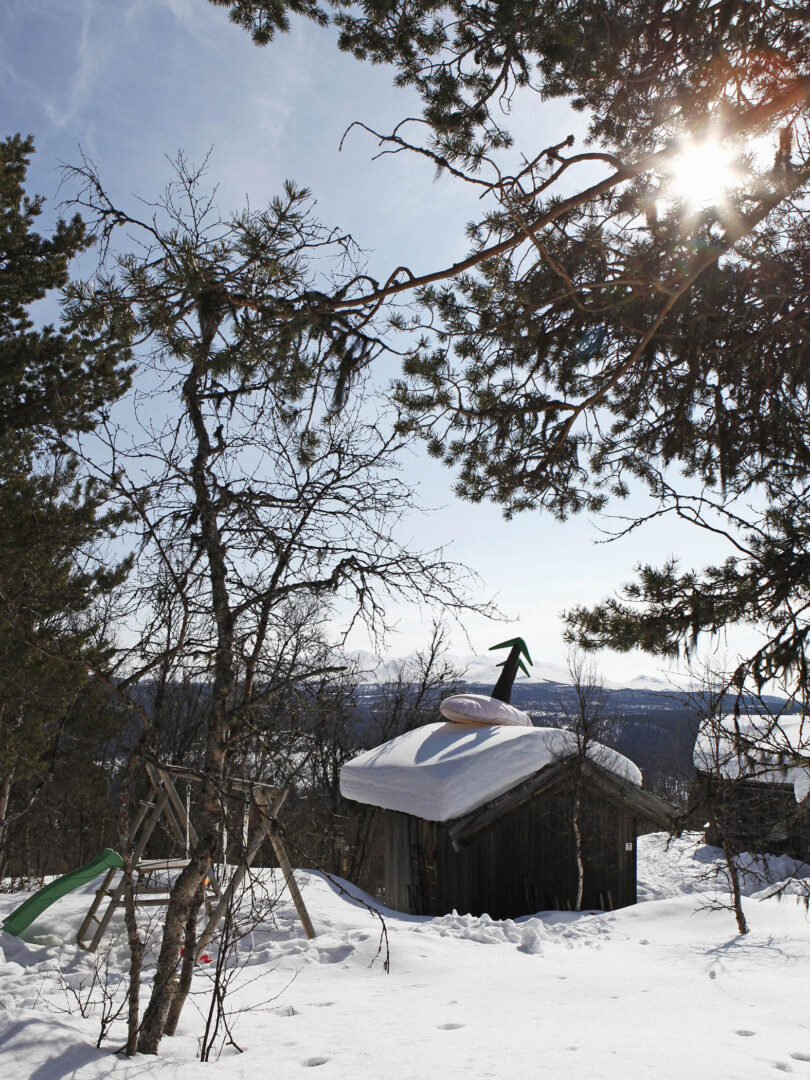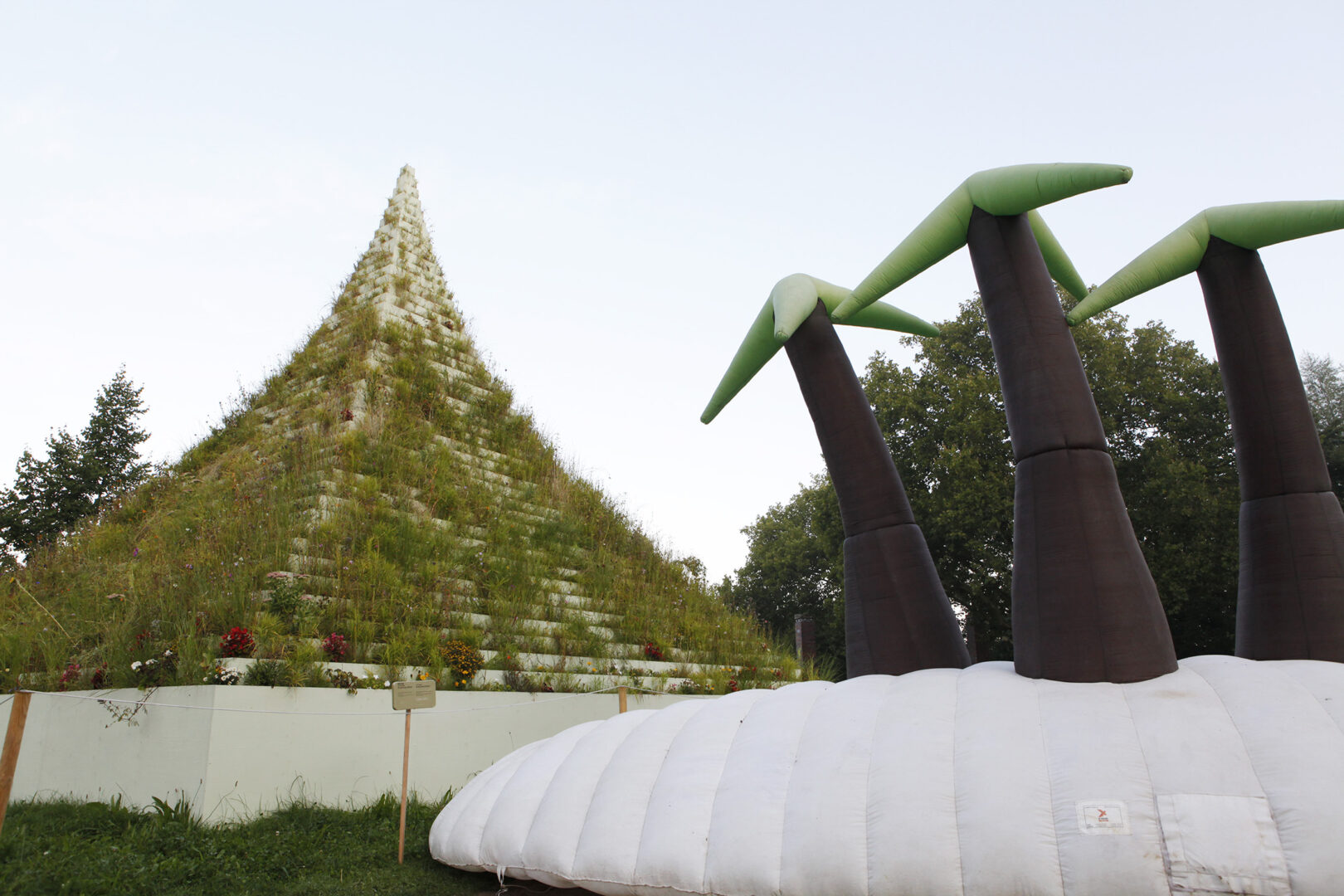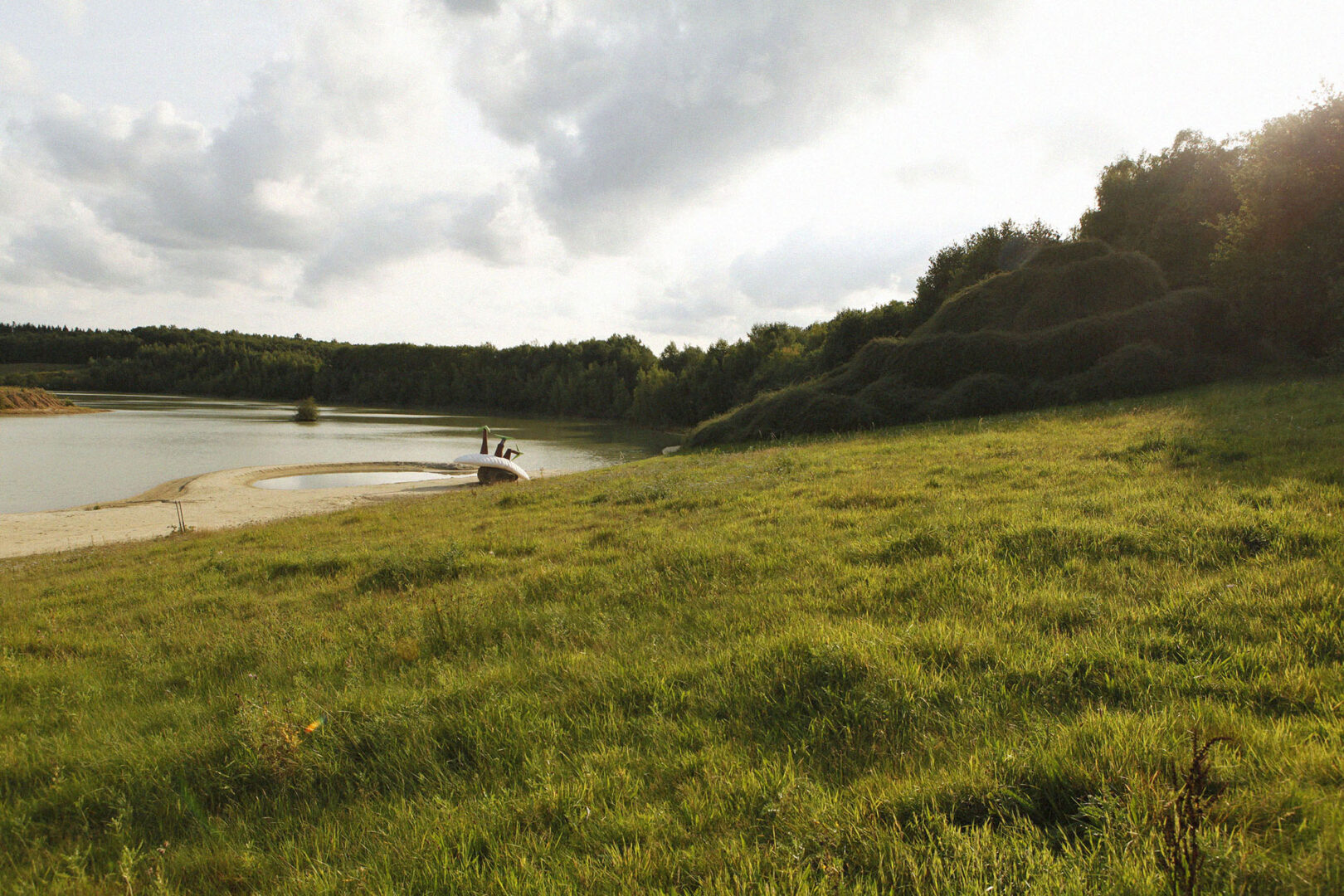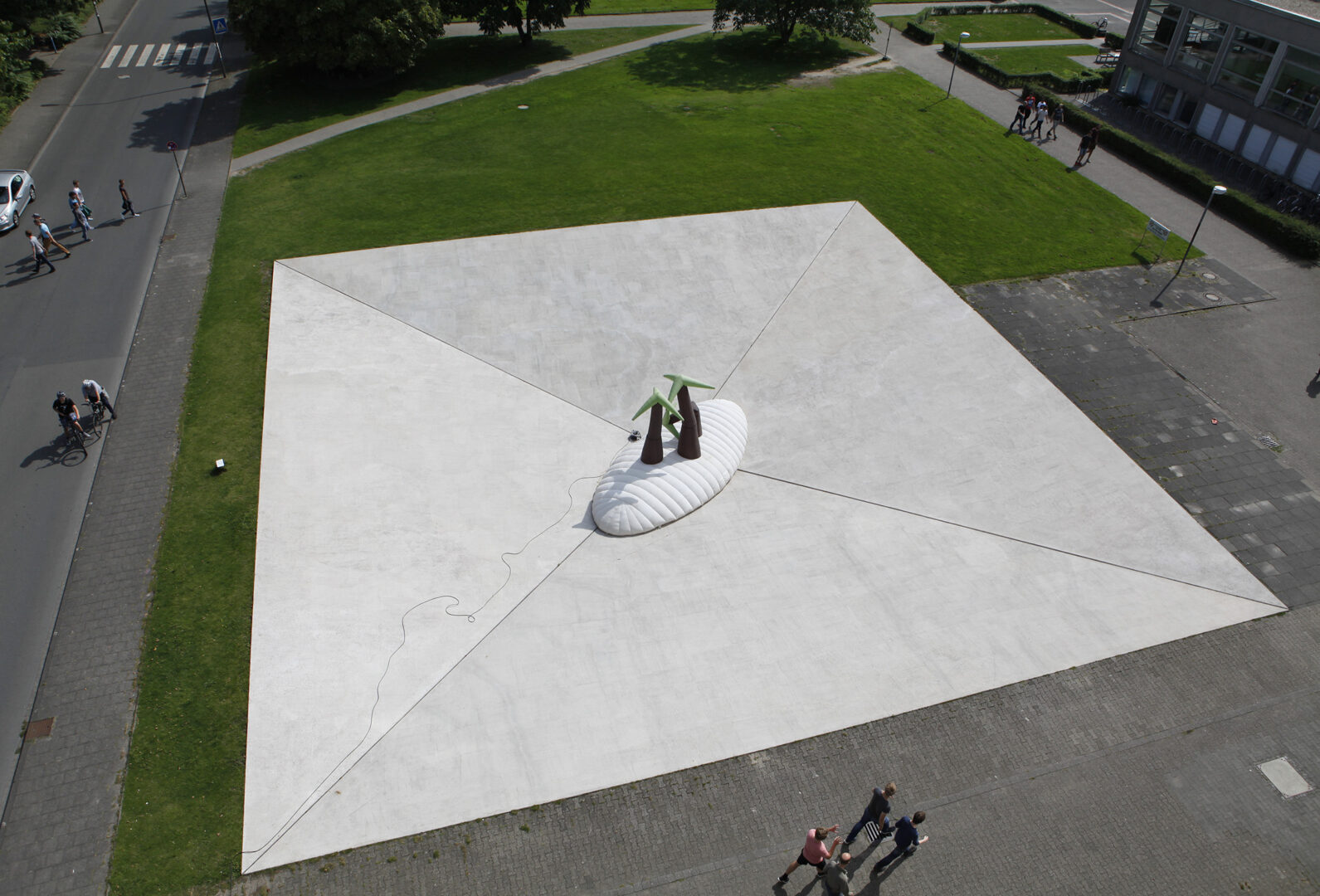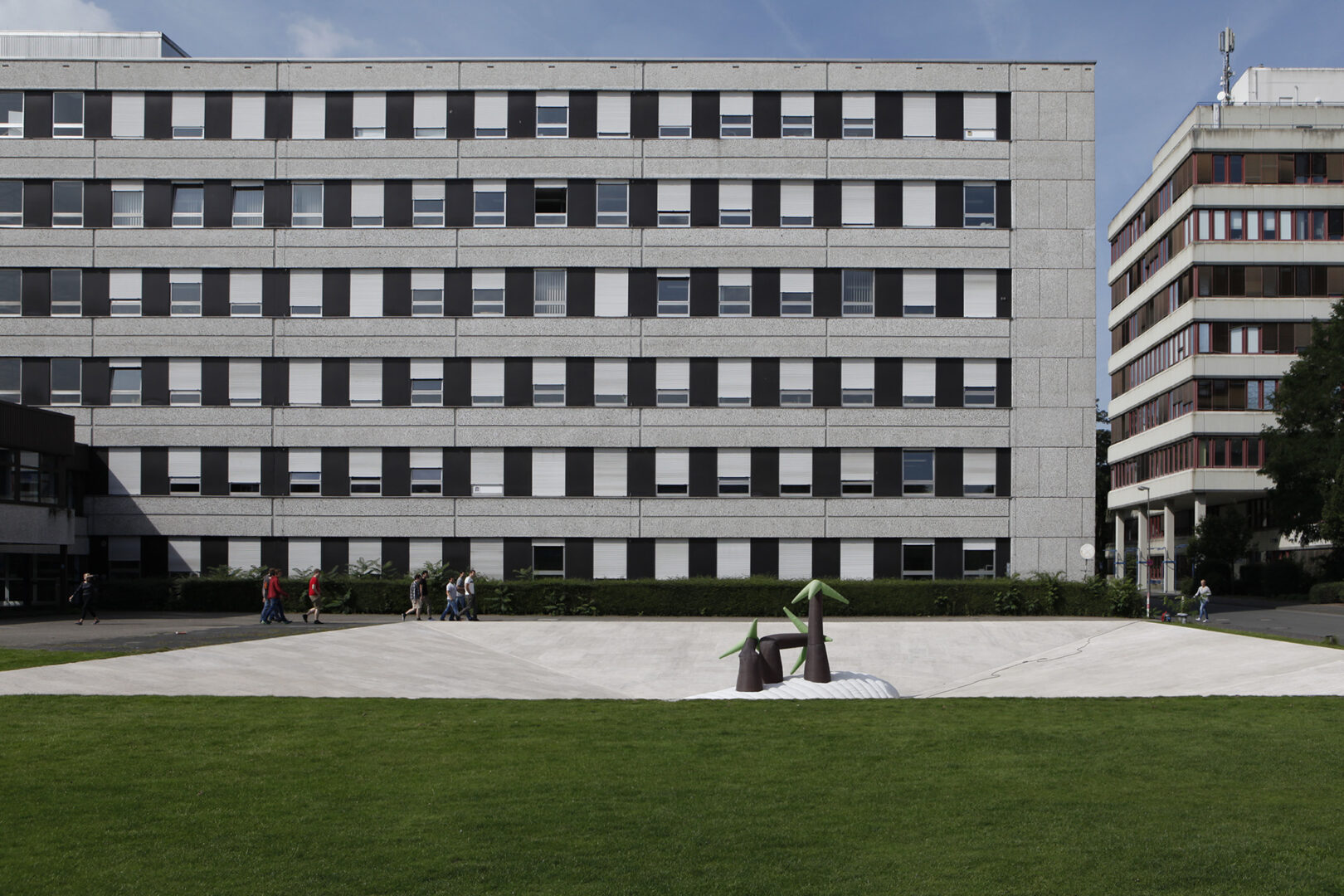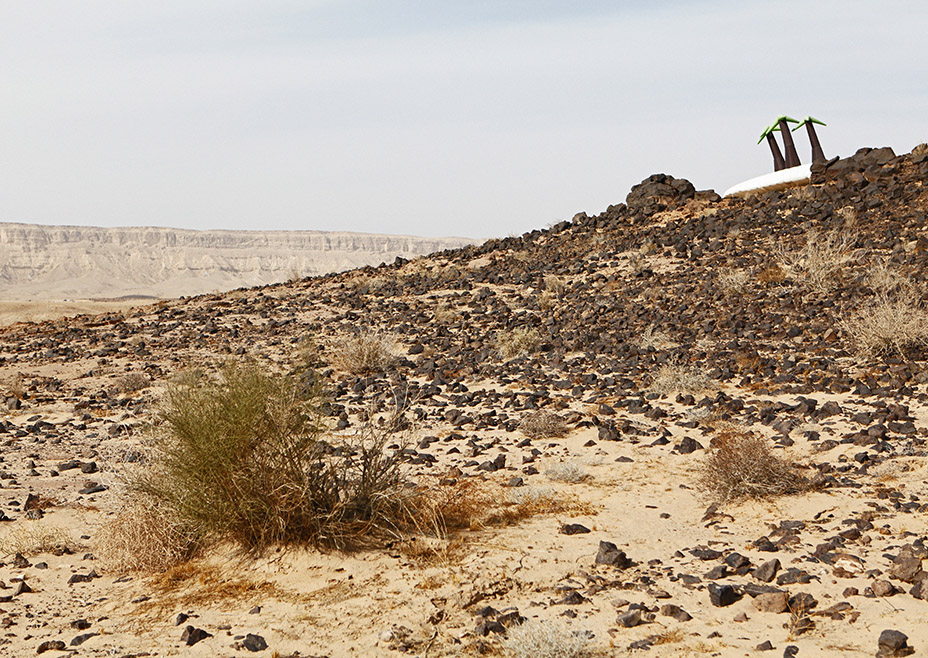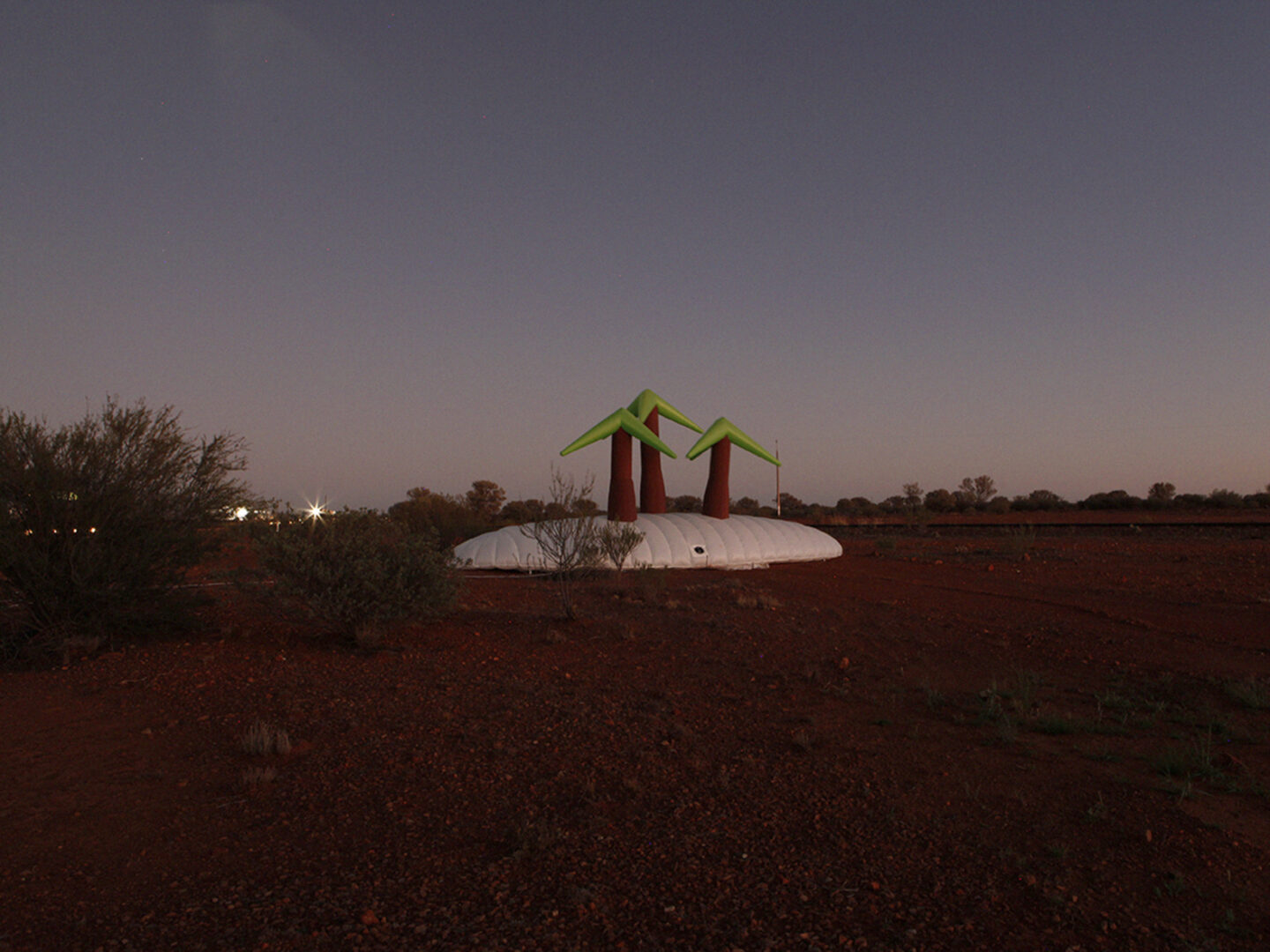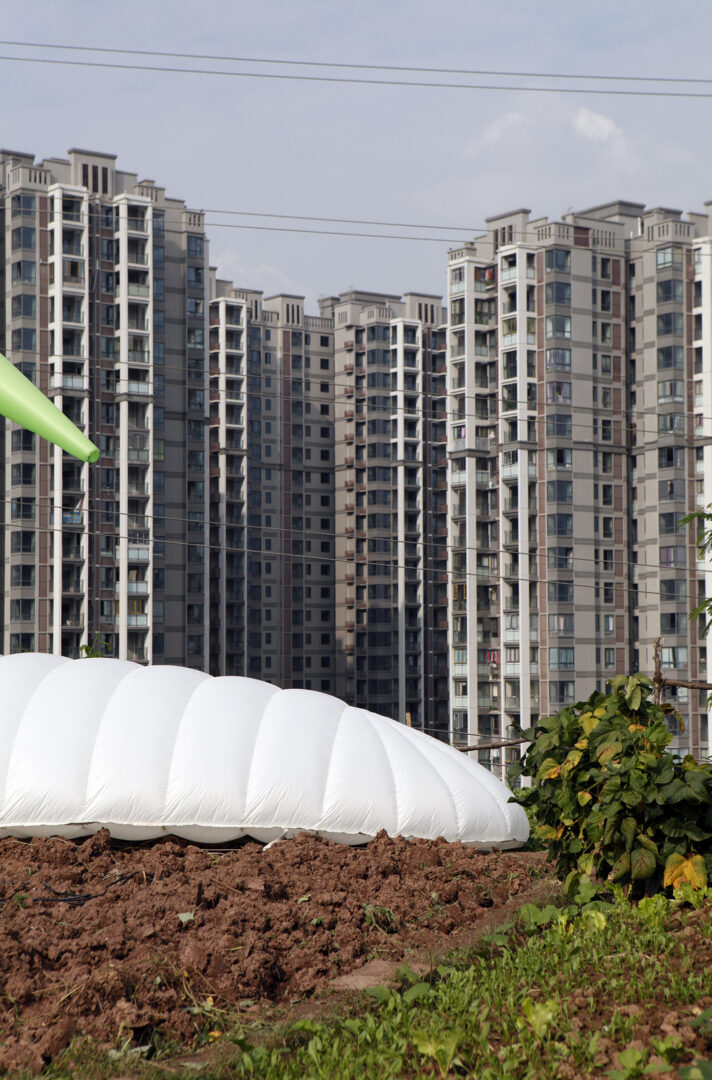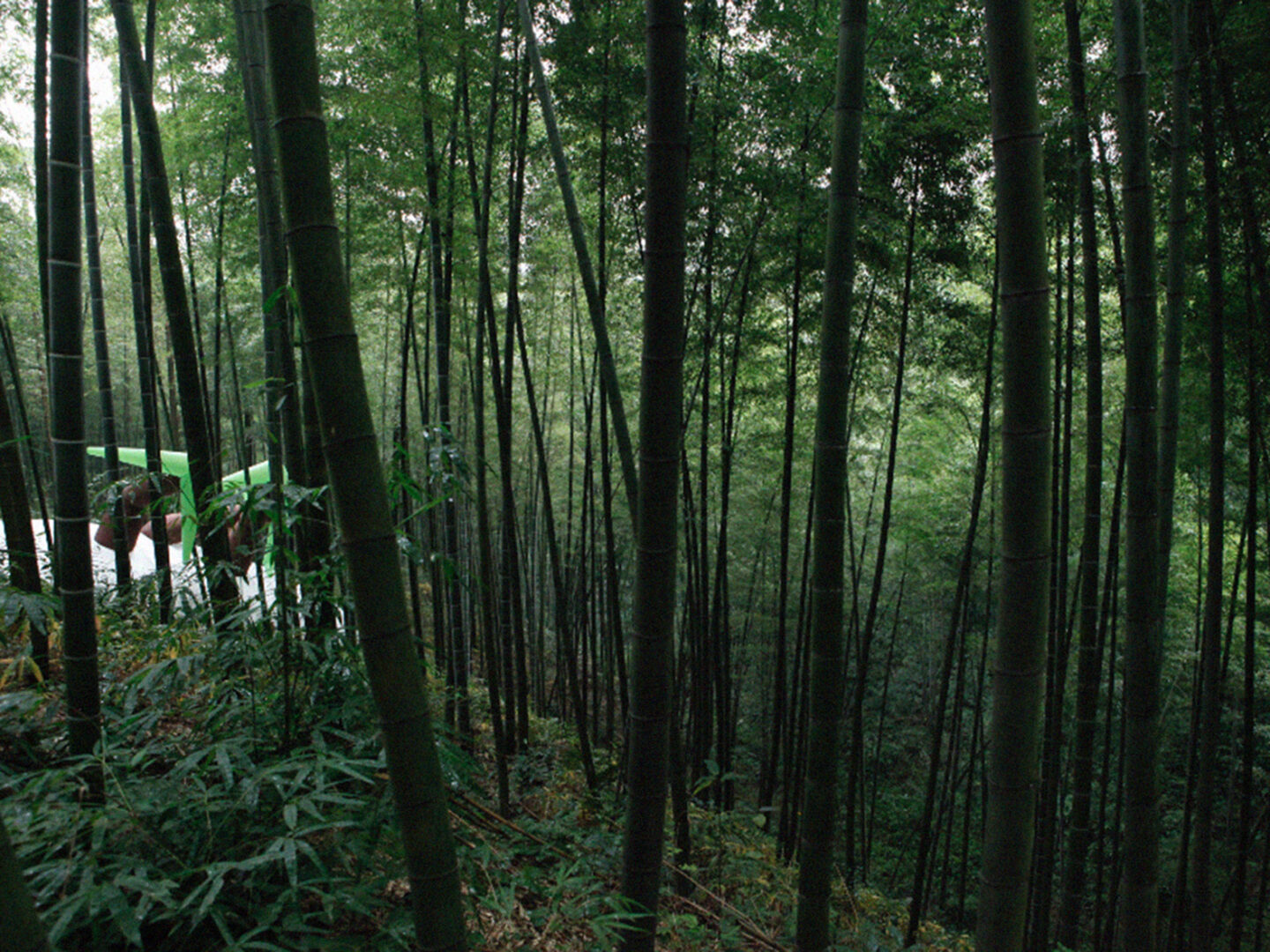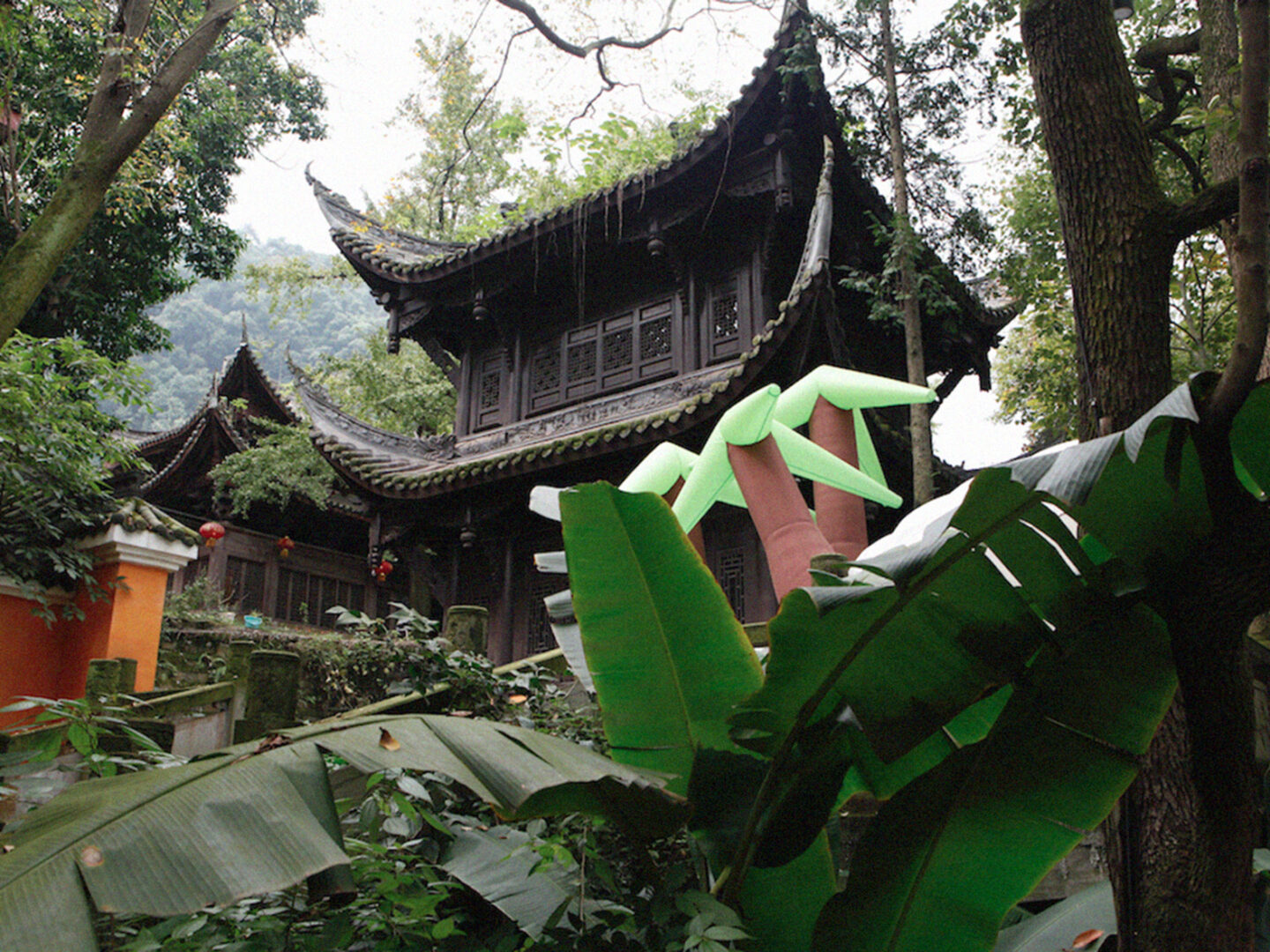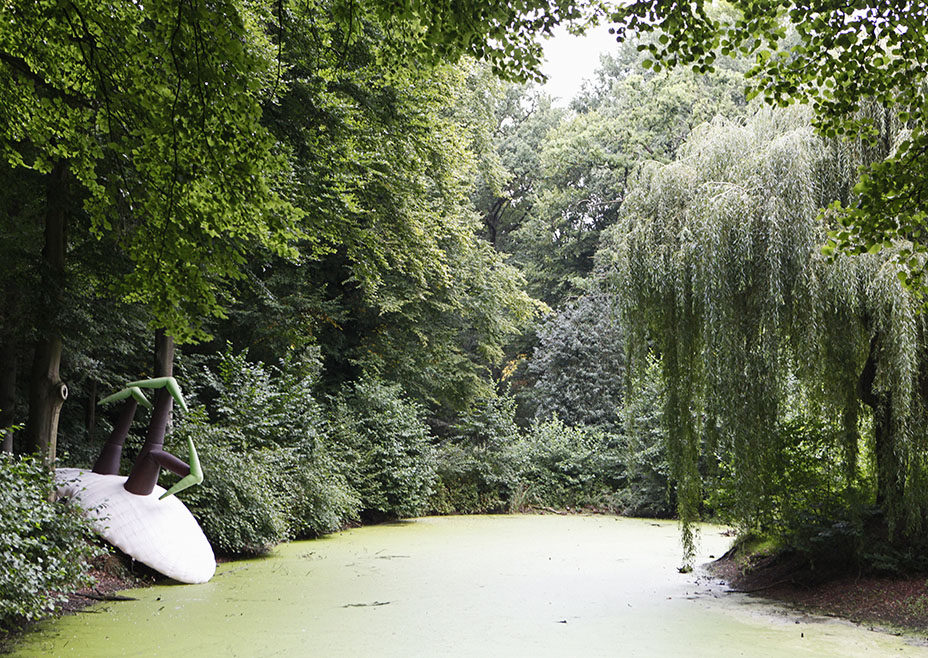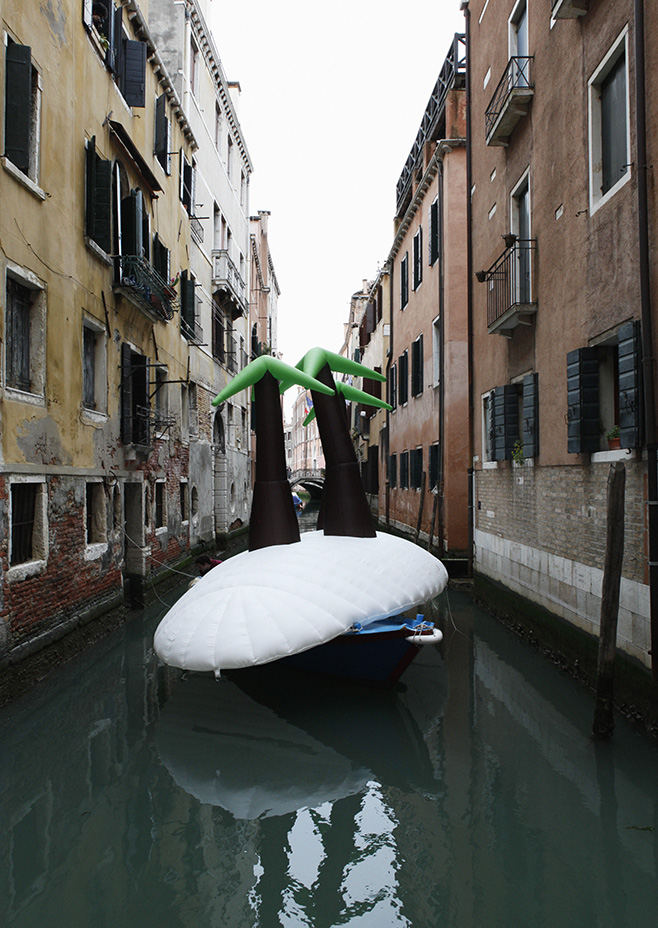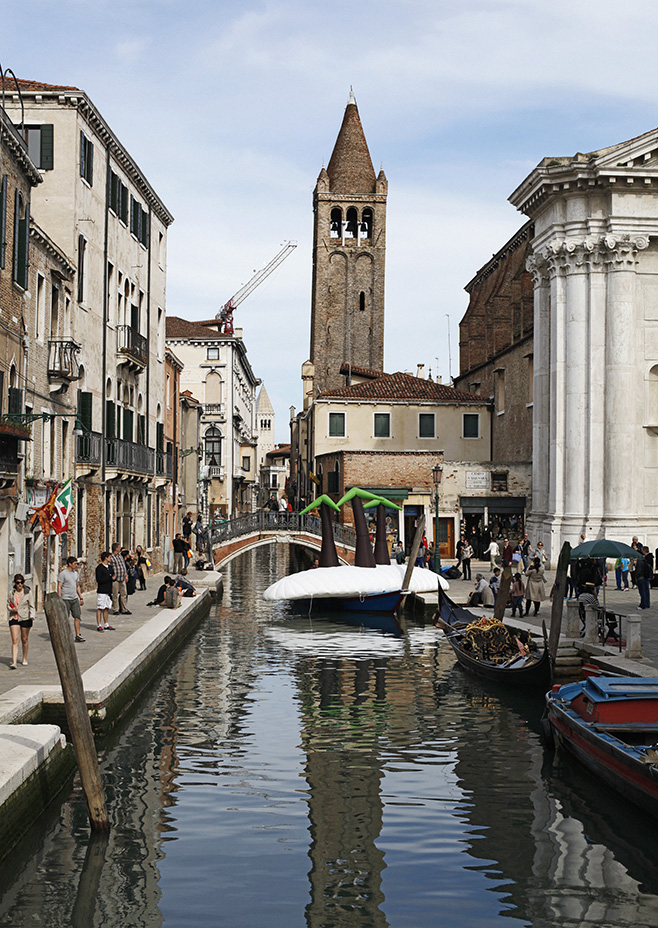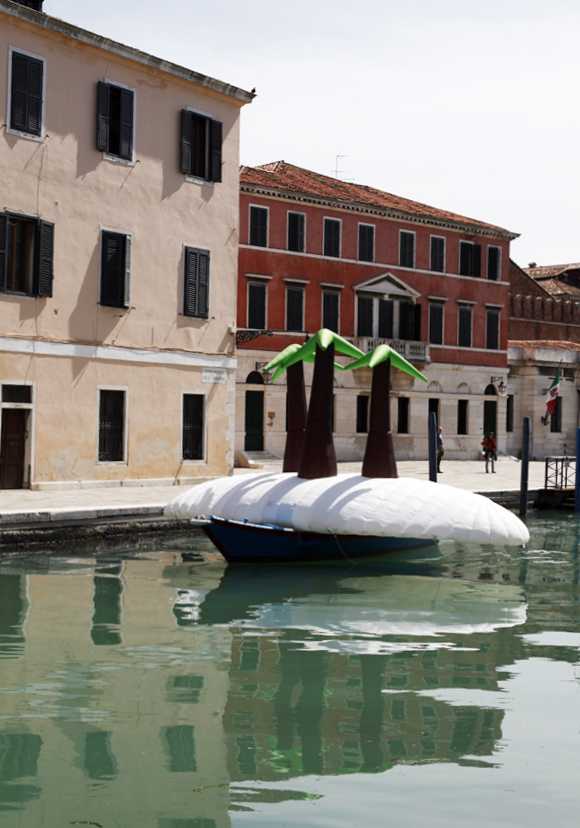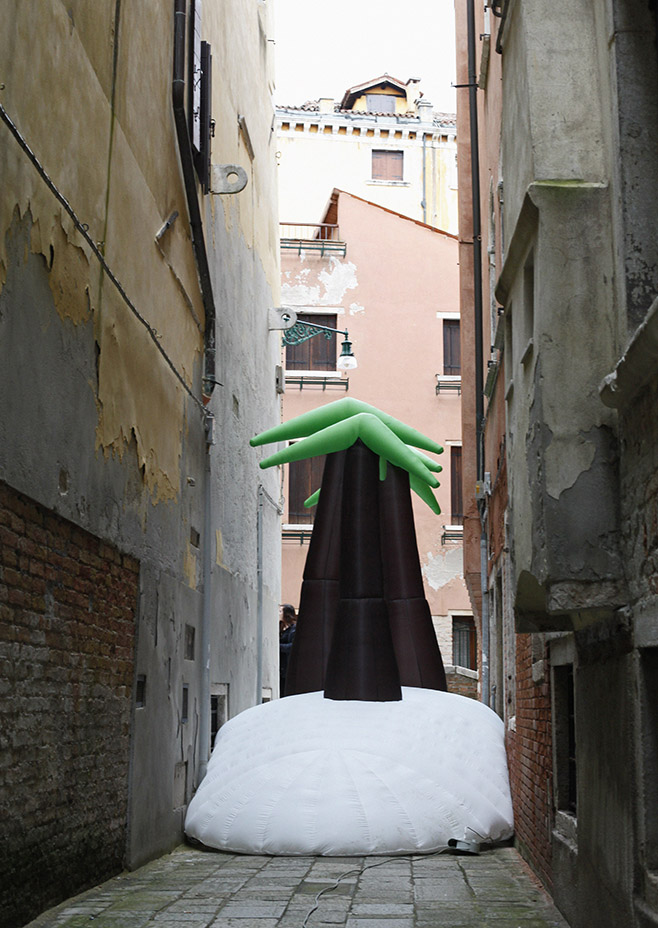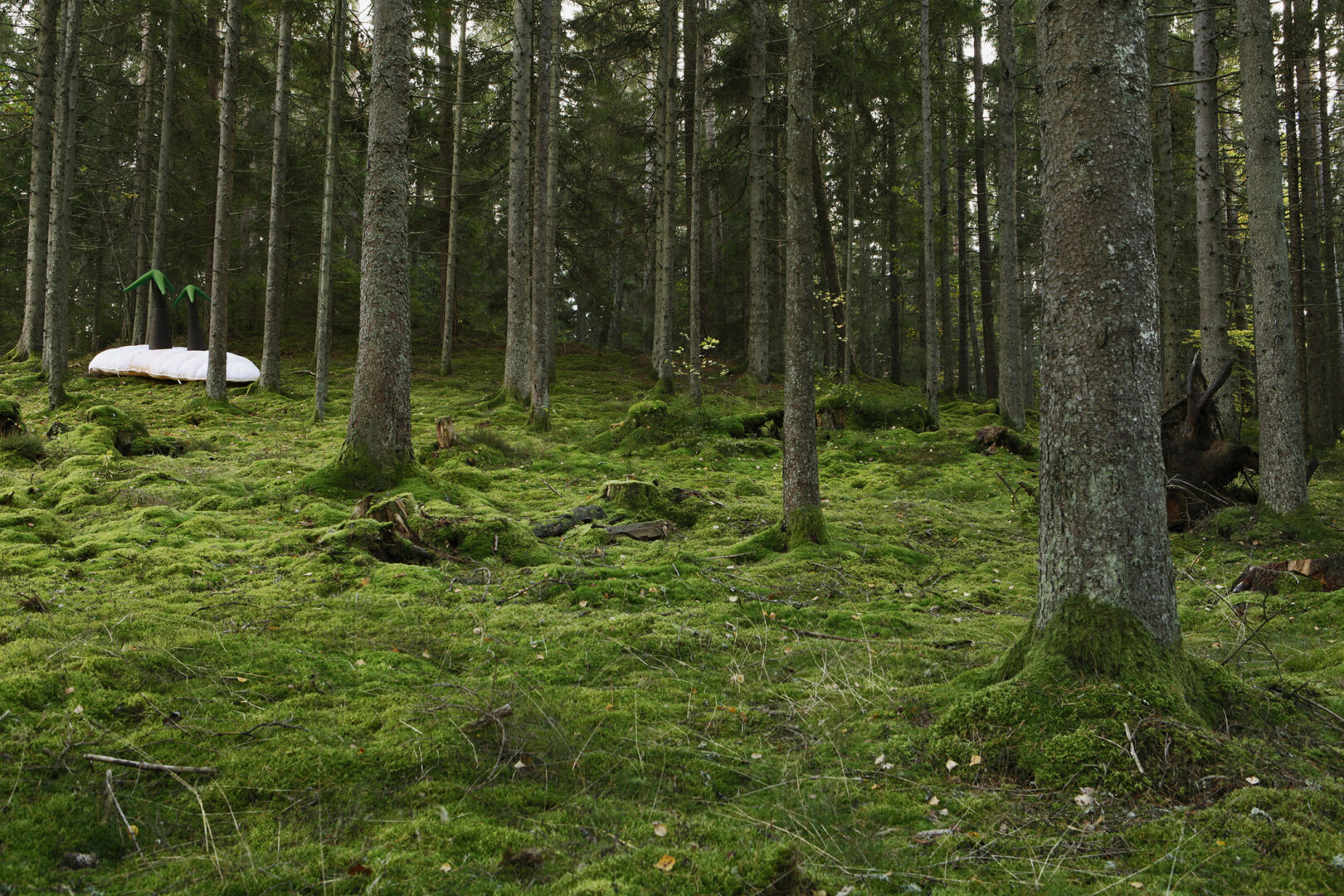The Island—The Movie was recorded between 2013 and 2023 in the Maldives, Sri Lanka, Australia, Sweden, and Denmark. It is the story of an island looking for a place to stay, and people help it on its journey through various landscapes.
First, divers in the sea rescue the sunken island. Then, it is transported on a boat and carried by people. The island gets a lift on a tuk-tuk in the jungle and a jeep through the desert. When stuck on a giant salt lake, the island practises flying and finally takes off over a sand dune in the Australian desert.
The island is an 8-meter-long inflatable sculpture created by Søren Dahlgaard. It consists of nylon rip-stock, the same material used for parachutes and hot air balloons, and an airfan. While the island is a playful object that activates play and participation, it is also an art project highlighting climate change and migration issues. Furthermore, The Island movie relates to landart and the landscape in various ways.
Directed by Søren Dahlgaard.
Edited by Meir Tati.
Thank you to The Danish Arts Council and Bikubenfonden for supporting the project.
The Island in Landscapes
Fuppidhoo is visiting different landscapes around the world in an ongoing photo series, which started at the Venice Biennale in 2013, where the Inflatable Island was first shown as part of The Maldives Exodus Caravan Show. Since Venice, The Inflatable Island has travelled through landscapes while participating in exhibitions in New Zealand, Australia, USA, China, Sri Lanka, Maldives, Israel, Switzerland, Morocco, Denmark, Sweden, Norway, Poland, Germany, Belgium, Spain, Czech Republic, Portugal and The Netherlands.
The island acts as a sculptural prop representing the climate refugees from the Maldives and elsewhere, who most likely will need to find a new home sometime soon. The inflatable island further sits in the context of art and ecology and the history of land art from the 1960s-70s in that the island represents a piece of the land (Maldives) and suggests some radical transformation is required to adapt to the new conditions brought by climate change and humanities impact on the planet.
As the island travels in the new geological era known as The Anthropocene (shaped by humans) landscape, will it find a new home in any of these foreign lands? And will it be welcomed?
The Inflatable Island – Fuppidhoo has been shown at The Art Gallery of United Nations Head Quarters, New York City, MAAT Museum of Art, Architecture and Technology Lisbon, Portugal, KUNSTEN Museum of Modern Art Aalborg, Skovgaard Museet Viborg, Copenhagen Airport, The Israeli Centre for Digital Art, Holon, Canberra Contemporary Art Space, RMIT Gallery, Melbourne, ColomboScope Arts Festival, Sri Lanka, the Changjiang Museum of Contemporary Art, Chongqing, China, The Cerveira Biennale, Portugal and at climate conferences in Geneva and Marrakesh.

